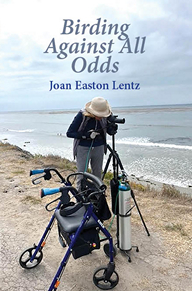The Nature Journal entry below is one that didn’t make it into the final version of A Naturalist’s Guide to the Santa Barbara Region, but it is still one of my favorites!
Nature Journal, March 6, 2001: A Rainy Night at the Farm Pond
Tonight is clear and starry after 3 days of rain. The ground is saturated. Every drainage has become a rushing creek; every creek a roaring stream. Mud puddles and full ponds: a perfect night to watch toads and frogs at their mating antics.
By the light of the moon, Marilyn and I notice that the pond has risen 6 feet since we visited last week. The water is about level with the top of the steep, muddy bank.
We shine our flashlights along the edge of the pond. On one side of the track, a dozen Black-crowned Night-Herons are lined up waiting. We’re surprised. Western Toads are normally distasteful to predators. But night-herons aren’t known to be too picky.
Another sweep with the flashlight along the edge of the pond. Aha! Spaced along the edge, their eyes and heads protruding from the murky water, are many, many Western Toads (Bufo boreas). It is romance night! About every 3 feet along the rim of the pond, the males station themselves, waiting for the females to arrive so they can grab and mate with them. The males crouch patiently, half-submerged— with their bulbous black eyes, carbuncled skin, and blotches of green, brown, and black on their legs and backs. The identifying mark: the thin yellow line reaching from the crown down to the tail end.
Unsure how to tell the males from the females, we assume the females are larger. When we finally come upon a TRIO mating, a large female has two much smaller mates clasped to her back.
If I gently poke one of the members of the trio, he gives out a weak “peep, peep, peep” call. This mystifies me, because the call we heard earlier in the week that came from a male sitting in a ground squirrel burrow was much louder. Did the burrow act as an echo chamber? It sounded like a pygmy-owl call on that day, but later I read that Western Toads have no vocal sacs and cannot call loudly. (Note: current research proves inconclusive and some populations of Western Toads do vocalize.)
The toads litter the ground around us, lying in wet furrows and tire tracks full of water on the nearby dirt road. They lurk among the muddy weeds, as well as at the edge of the pond. Their sense of timing – a wet, moonlit night in early March – is perfect.
The adjacent hillside is pock-marked with ground squirrel and gopher burrows. These are the refuges for the estivating toads when mating is over and they return to terrestrial life.
A coyote howls from the Carpinteria foothills and the moon is hidden again by the clouds as we prepare to leave.
But the male Western Toads won’t depart until every female that waddles up to the pond’s edge receives the attention she deserves. It ‘s Bufo’s night for breeding.

